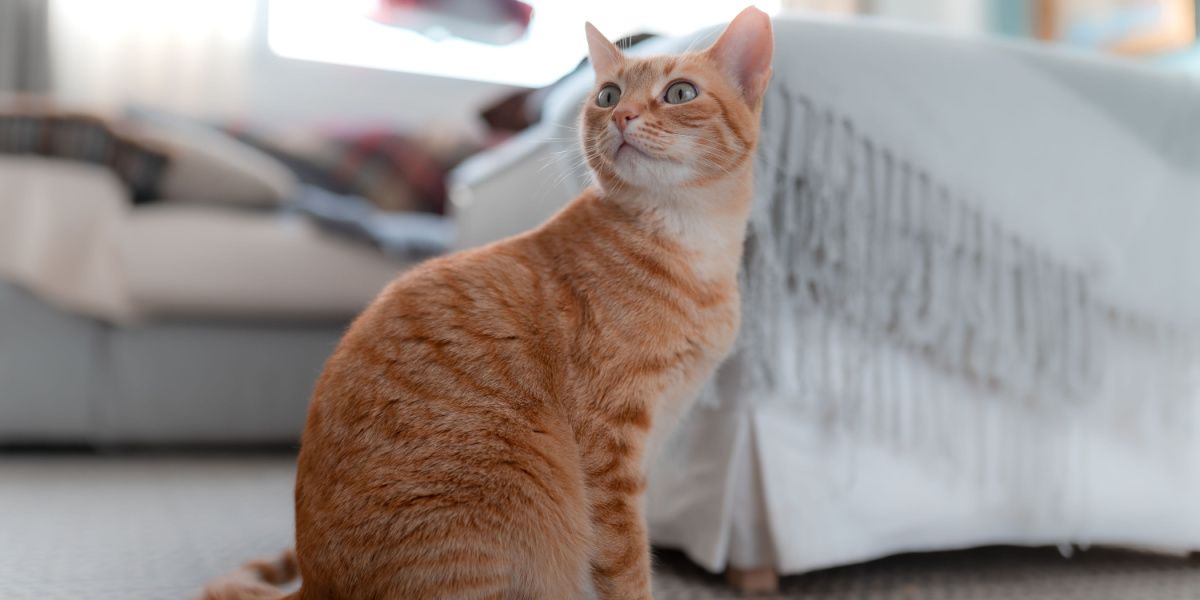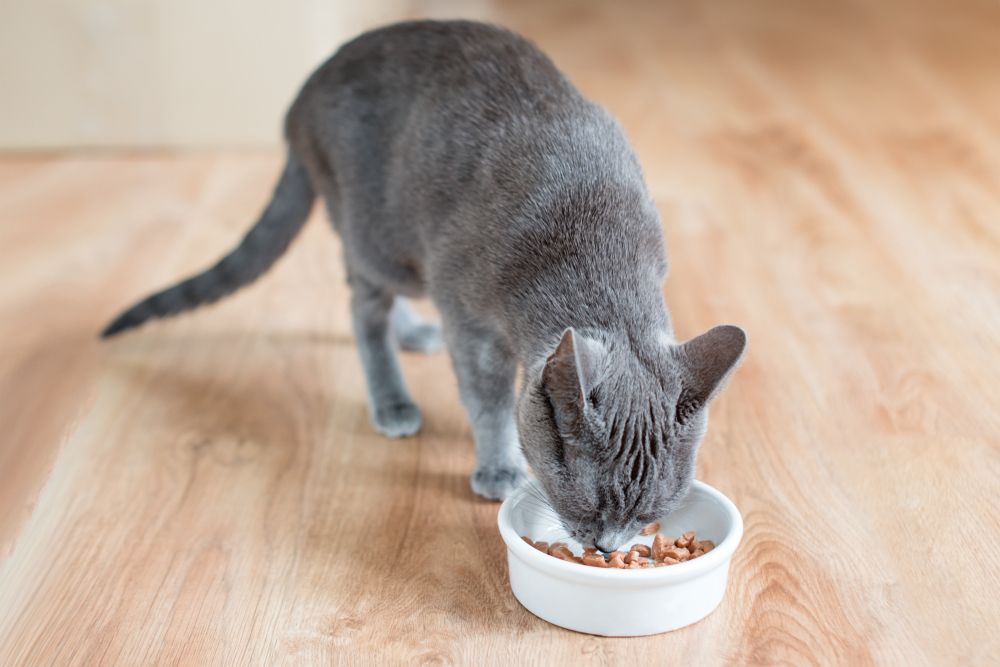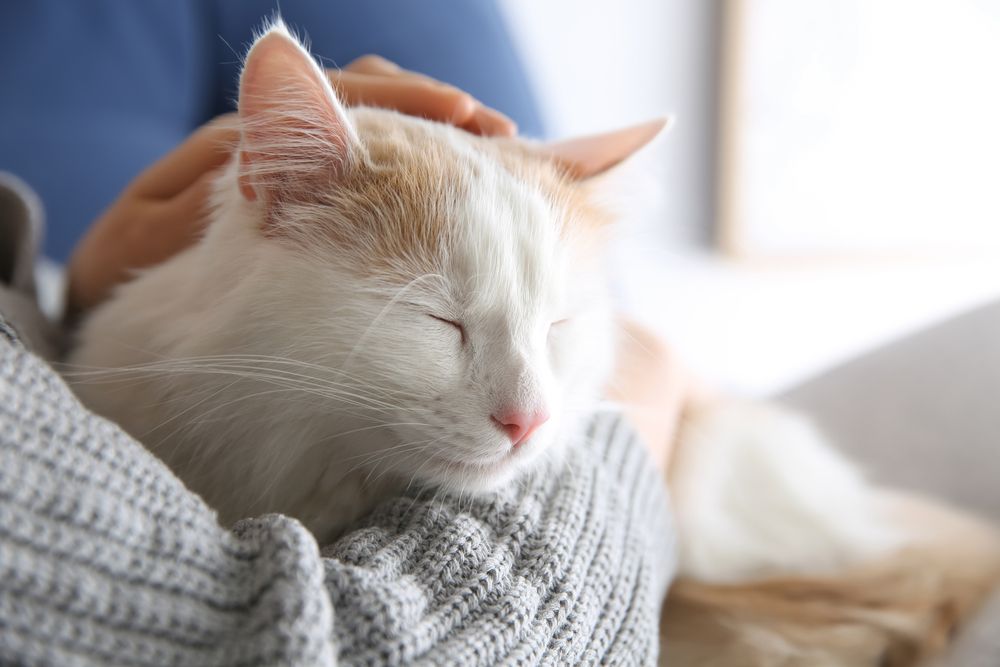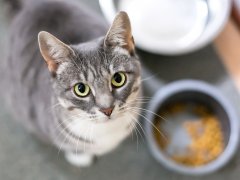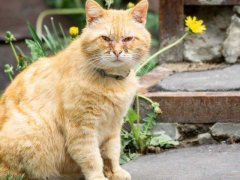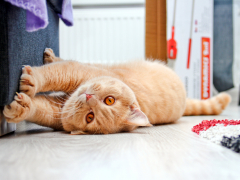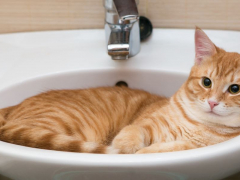Shutterstock.com
Glandex is an over-the-counter nutritional supplement that supports healthy anal gland function in cats. It contains fiber that bulks and firms your cat’s stools, allowing natural emptying of the anal glands every time they defecate.
It is formulated specifically for cats who suffer from anal gland problems. However, the Glandex formula also contains key ingredients like omega fatty acids, prebiotics, and probiotics. These are great for supporting healthy digestion in all cats.
Glandex for Cats Overview

About Glandex for Cats
Glandex is a nutritional supplement designed to support anal gland function in pets. The manufacturers also claim that the ingredients support the digestive tract and may even reduce underlying inflammation in cats with seasonal allergies.
Unless your cat suffers from problems with their anal glands, you may not even be aware that they exist! Cats have two anal glands that sit on either side of their rectum and continually fill with fluid—which is entirely normal. A small amount of this fluid is expressed every time your cat passes a normal stool. If something goes wrong in this process, anal glands can become impacted or even infected, causing your cat serious discomfort.
Signs of anal gland problems in cats include:
- Scooting
- Licking their back end excessively
- Swelling or redness of anal glands
- Blood on stools
- Pain or difficulty defecating
- Defecating outside the litter box
- Foul (often fishy) smell
Anal glands can become impacted for several reasons, but it is often related to the consistency of your cat’s stools. While cats with impacted anal glands need veterinary attention for immediate relief, nutritional supplements like Glandex can be useful in preventing further problems.
Glandex Ingredients
Glandex contains a unique fiber blend that includes pumpkin seed powder. This blend helps to bulk and firm your cat’s stools, encouraging the natural emptying of their anal glands every time they defecate. In addition to supporting normal anal gland function, Glandex contains omega fatty acids that help reduce inflammation in the gut in cats with allergies. It also contains probiotics and digestive enzymes, which play a vital role in maintaining overall gut health in all cats.
Full list of active ingredients:
- Pumpkin seed powder
- Granulated pumpkin seed powder
- Apple pectin cellulose powder
- Quercetin dihydrate
- Lactobacillus acidophilus
- Vitamin E
- Bromelain
- Vitamin C
Glandex also contains the inactive ingredients rice starch, natural flavor, sorbic acid, and tuna powder. There are no artificial ingredients or preservatives, and it is free of corn, soy, and wheat.
Glandex Dosage for Cats
Dosage: 1 Scoop (1/2 tsp) once daily.
Glandex should not be used in cats younger than 12 weeks old or heavier than 25 pounds.
The recommended dose is one scoop of powder daily. However, the manufacturer recommends using just half a scoop for the first week. This allows your cat’s digestive system time to adjust to the higher amount of fiber and reduces the risk of a stomach upset.
Like many supplements, you need to use it consistently for a few weeks to see the full benefits of Glandex. If you have not noticed any improvements after a month, it is safe to double the dosage to two scoops daily. For some cats, it may take 2–3 months to see optimal results. Each 4-ounce bottle of Glandex for cats contains 97 scoops of powder, so it will last quite a while.
How to Administer Glandex to Cats
Shutterstock.com
The easiest way to administer Glandex is to mix it into your cat’s normal food. Glandex is tuna-flavored so many cats will eat it readily. However, you can also mix it with a tasty treat or soft chew if they need some extra encouragement.
If your cat really won’t eat Glandex on their own, you can also mix it with some water and give it directly into their mouth with a syringe. Just make sure they’ve had some food at least an hour before so their stomach isn’t empty and always provide fresh drinking water.
Side Effects of Glandex
Glandex isn’t associated with any serious or long-term side effects. However, some cats may experience signs of mild stomach upset when they first start taking it. This might include gas, diarrhea, and vomiting. Starting your cat on a lower dose at first should help avoid this.
It is normal to notice your cat’s stool becoming larger and firmer after taking Glandex. If your cat becomes unwell after taking Glandex or their anal gland symptoms are not improving, you should take them to your veterinarian for a check-up.
Drug Interactions and Overdose
Shutterstock.com
There are no known drug interactions with Glandex. However, it is important that you tell your vet about any supplements your cat is taking before they prescribe any medication.
It is not recommended to use Glandex in pregnant or lactating cats, or those with bleeding disorders, kidney disease, liver disease, or gastric ulceration. If your cat has other medical conditions, always discuss any potential problems with them before starting Glandex.
There is no published information on what to expect from an overdose of Glandex. However, the ingredients all have a wide safety margin in cats. If your cat does accidentally overdose on Glandex, you should contact your veterinarian for advice.
How to Store Glandex
Store Glandex in an air-tight container in a cool, dry place, away from direct sunlight. Keep it out of reach of children and animals.
Drug Dosing Disclaimer: We are only able to provide doses for medications that are FDA approved for use in cats and only as the label guidelines dictate. For medications that are used off-label we can only provide guidelines and safety information for use. Safe and appropriate dosing for off-label medications can only be determined by a primary care veterinarian.
We encourage you to work with your veterinarian to determine if a particular medication is appropriate for your cat. Changing or adjusting a dose for your cat on your own without consulting with a veterinarian can carry risk. We do not encourage use of medications prescribed for human use in pets without first consulting with a primary care veterinarian.
Frequently Asked Questions
How can I help my cat with impacted glands?
Cats with impacted glands need veterinary care to relieve the impaction and treat any infection present. Many cats with frequent anal gland problems benefit from nutritional supplements to increase the fiber in their diets. This helps your cat produce healthy, firm stools that encourage the natural emptying of their anal glands every time they defecate.
Does Glandex work for cats?
Glandex contains added fiber to bulk and firm your cat's stool, which helps their anal glands empty naturally every time they defecate. Your cat should see results after taking Glandex regularly for 3–5 weeks. You can increase the daily dosage to two scoops if you have not seen results after a month.
How do I know if my cat needs their glands expressed?
Signs of over-full anal glands in cats include scooting, pain or difficulty defecating, defecating outside the litter box, and swelling or redness of the anal glands. Anal glands can often get over-full after a period of loose stools.
What are the side effects of Glandex for cats?
Glandex is considered very safe for cats. However, it can cause signs of stomach upset, including gas, vomiting, and loose stools. To reduce the risk of side effects, use half the daily dose for the first week.
Can you express a cat's glands at home?
Most cats empty their anal glands naturally every time they defecate. You should only express your cat's anal glands if your veterinarian advises you to and has shown you how to do so safely.
